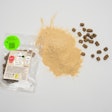As discussed in last month's column, the Association of American Feed Control Officials (AAFCO) Pet Food Committee accepted recommendations from the expert panel (with minor amendments) for revision to the AAFCO Dog and Cat Food Nutrient Profiles at its January 2013 meeting in Albuquerque, New Mexico, USA. At the same meeting, the committee also accepted recommended revisions to the dog and cat feeding trial protocols, which may be used as an alternative means to substantiate the nutritional adequacy of "complete and balanced" petfoods.
These changes to the protocols are still provisional, and must be approved by the board of directors and full AAFCO membership before they become official. However, assuming that is accomplished at the AAFCO annual meeting in August, the new protocols will appear in the 2014 AAFCO Official Publication.
The AAFCO dog and cat feeding trial protocols were last revised in 1996. Except for new requirements regarding substantiation of continued validity of a protocol-tested product (discussed below), the recent revisions are not extreme or extensive. Beyond an editorial change in the outline format, a number of the changes are made to clarify ambiguities and/or close potential loopholes. For example, the current protocols read "daily food consumption may be measured and recorded." While considered a prudent thing to do in any sound feeding trial, it previously was not made mandatory since the data were not used in the final evaluation of performance.
However, the protocols also allow for removal of dogs or cats for poor food intake during the first two weeks of the trial, which obviously can't be effectively assessed without measuring individual food intake. As revised, therefore, the protocols specify that feed intake of all individuals must be measured and recorded if any animal is removed for poor intake. So, under conditions where feed intake of individuals are not observed (e.g., group housing), animals could not be removed from the study for that reason.
Some of the other changes include an increase in the minimum weight gain of puppies in both the growth and gestation/lactation trials compared to the historical control group, and elimination of the option to remove puppies or kittens from large litters in the gestation/lactation trials. Also expanded are details on the allowed source of the animals used for establishing historical colony averages in all trials. It is newly specified that these data must be obtained from a population of animals from the same testing facility and that accurately represents the size and breed of the animals to be used in the test group.
Also, because of the disparity in weight gain between male and female puppies and kittens, historical data for growth must be obtained from a minimum 30 males and 30 females, twice the number as required by the current growth protocols.
The statistical methodology has been made more rigorous as well, by raising the limit on the p-value from 0.01 to 0.05 for all measurements except for the blood parameters. Simply put, this increases the likelihood of detecting a difference between a test and control group for factors such as weight maintenance, weight gain or litter size. In other words, when the data are analyzed by this fashion the test diet is more apt to fail, strengthening the predictive value of the test for those diets that pass this heightened scrutiny.
The biggest change is the added requirement to substantiate continued validity of a protocol-tested diet. Briefly, any formula change that involves substitution of one or more ingredients or affects the order of ingredients in the label declaration requires the product to be tested again, unless it can be demonstrated that the revised formula meets the Product Family criteria. Further, even if no changes to the formula are made, on a five-year cycle a product previously substantiated via a feeding trial must be shown to contain at least 95% of the "key nutrients" (as specified in the Product Family criteria) compared to when the food was originally tested. Finally, Product Family members must be reassessed every five years.
These additional requirements will help curtail the potential for nutrient drift over time due to changes in ingredient sources or processing methods. However, it is unclear how the state feed control official will effectively monitor compliance with these new requirements. A new affidavit attesting to continued validity will likely be needed.
Regardless, these new requirements do not address the primary issue; i.e., that a product meeting the Product Family criteria offers the weakest substantiation of nutritional adequacy, mostly stemming from the fact that there are no provisions to account for differences in bioavailability of substituted ingredients. Unless and until the insufficiency of the means by which a petfood is considered a member of a Product Family is addressed, the validity of substantiation by this method will continue to be questionable.



















